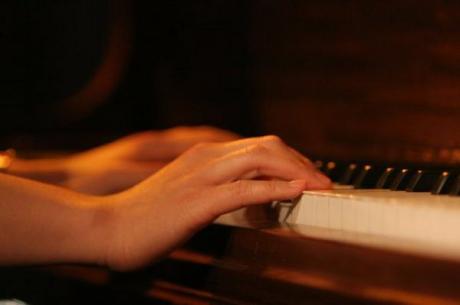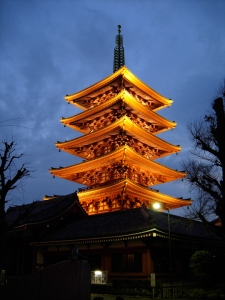宮本 武蔵

Miyamoto Musashi was a famous Japanese Samurai. His date of birth or death are still a matter of great debate among Japanese historian or genealogist. But one thing is sure he lived during the keicho era. Most people would know this time period has the early Edo period. This period in Japanese history was one of great change for Japan. Tokugawa Ieatsu was warring to unify and control all Japan. During this period a legend was in the mist of making.

When Musashi was 13,he fought his first dual with a samurai named Arima Kihei. Arima was traveling to aquier more skill in his art. He went to the city of Hirafuku-mura to accept public chalanges. Musashi saw that and wrote his name had a challenger. A messenger came to the Dorin’s temple, where Musashi was staying, to inform Musashi that his duel had been accepted. Dorin, Musashi’s uncle, was shocked by this, and tried to beg off the duel in Musashi’s name, based on his nephew’s age. Kihei was adamant that the only way his honor could be cleared was if Musashi apologized to him when the duel was scheduled. So when the time set for the duel arrived, Dorin began apologizing for Musashi, who merely charged at Kihei with a six-foot quarterstaff, shouting a challenge to Kihei. Kihei attacked with a wakizashi, but Musashi threw Kihei on the floor, and while Kihei tried to get up, Musashi struck Arima between the eyes and then beat him to death. It was saud that Arima was arrogant, overly eager to fight, and not a really talented swordsman. That duel would be the first in a series of many fight for the young Miyamoto.
In 1600, a war began between the Toyotomi clan and Tokugawa clans.Those tow clans were the major forces in that period. Musashi fought on the Toyotomi’s side or also known as “the Army of the West”. More precisely, he participated in the attempt to take Fushimi castle by assault in July 1600, in the defense of the besieged Gifu Castle in August of the same year, and finally in the famed Battle of Sekigahara. Some doubt has been cast on this final battle, as the Hyoho senshi denki has Musashi saying he is “no lord’s vassal” and refusing to fight with his father in the battle. After the battle, Musashi disappears from the records for a while. The next mention of him has him arriving in Kyoto at the age of 20 , where he famously began a series of duels against the Yoshioka School. Musashi’s father, Munisai, also fought against a master of the Yoshioka school and won 2 out of 3 bouts in front of the shogun at the time, Ashikaga Yoshiaki who granted him the title of “Best in Japan”. The Yoshioka School was the foremost of the eight major schools of martial arts in Kyoto, the “Kyo-ryū Schools of Kyoto”. Legend has it that these eight schools were founded by eight monks taught by a legendary martial artist resident on the sacred Mount Kurama. At some point, the Yoshioka family also began to make a name for itself not merely in the art of the sword but also in the textile business and for a dye unique to them. They gave up teaching swordsmanship in 1614 when they fought in the Army of the West against Tokugawa Ieyasu in the Battle of Osaka, which they lost. But in 1604, when Musashi began duelling them, they were still preeminent. There are various accounts of the duel
Musashi challenged the master of the Yoshioka School to a duel ,he was a samurai named Yoshioka Seijūrō. On 8 March 1604 Seijūrō accepted, and they agreed to a duel outside Rendaiji in Rakuhoku, in the northern part of Kyoto. Musashi arrived late, which would become on of is famous psychological tactic. By doing so he greatly irritating Seijūrō. They faced off, and Musashi struck a single blow, per their agreement. This blow struck Seijūrō on the left shoulder, knocking him out, and crippling his left arm. He apparently passed on the headship of the school to his equally accomplished brother, Yoshioka Denshichirō, who promptly challenged Musashi for revenge. The duel took place in Kyoto outside a temple, Denshichirō wielded a staff reinforced with steel rings while Musashi arrived late a second time. Musashi disarmed Denshichirō and defeated him. This second victory outraged the Yoshioka clan, whose head was now the 12-year old Yoshioka Matashichiro. They assembled a force of archers, musketeers and swordsmen, and challenged Musashi to a duel outside Kyoto, near Ichijoji Temple. Musashi broke his previous habit of arriving late, and came to the temple hours early. Hidden, Musashi assaulted the force, killing Matashichiro, and escaping while being attacked by dozens of his victim’s supporters. With the death of Matashichiro, this branch of the Yoshioka School was destroyed.
From 1605 to 1612, he travelled extensively all over Japan in Musha Shugyo, a warrior pilgrimage during which he honed his skills with duels. He was said to have used bokken or bokuto in actual duels. Most of the engagements from these times did not try to take the opponent’s life unless both agreed, but in most duels, it is known that Musashi did not care which weapon his foe used such was his mastery. In1607, Musashi departed Nara for Edo, during which he fought and killed a kusarigama practitioner named Shishido Baiken. In Edo, Musashi defeated Muso Gonnosuke, who would found an influential staff-wielding school known as Shinto Muso Ryu. Records of this first duel can be found in both the Shinto Muso-ryu tradition and the Hyōhō Niten Ichi-ryū (Miyamoto Musashi’s school). Musashi is said to have fought over 60 duels and was never defeated, although this is a conservative estimate, most likely not accounting for deaths by his hand in major battles. In 1611, Musashi began practicing zazen at the Myoshinji Temple, where he met Nagaoka Sado, vassal to Hosokawa Tadaoki; Tadaoki was a powerful lord who had received the Kumamoto Domain in west-central Kyūshū after the Battle of Sekigahara. Moving to Kyūshū would lead to one if not the most famous duel in Miyamoto’s life.
The duel whit Sasaki Kojirō
In April, 1612 he would be asked to duel Sasaki Kojirō who was a long-time rival of Miyamoto, and is considered the most challenging opponent Musashi ever faced. Apparently, the young Musashi heard of Kojirō’s fame and asked Lord Hosokawa Tadaoki through the intermediary of Nagaoka Sado Okinaga, a principal vassal of Hosokawa to arrange a duel. Hosokawa assented, and set the time and place as 13 April 1612, on the comparatively remote island of Ganryujima of Funashima. The match was probably set in such a remote place because by this time Kojirō had acquired many students and disciples, and had Kojirō lost, they would probably have attempted to kill Musashi. According to the legend, Musashi arrived more than three hours late, and goaded Kojirō by taunting him. Kojiro’s favored weapon during combat was a straight-edged nodachi with a blade-length of over 90 cm long. As a comparison, the average blade-length of the regular katana are usually 70 cm but rarely longer. It was called the “Monohoshi Zao” (often translated into English as “The Drying Pole”). Despite the sword’s length and weight, Kojirō’s strokes with the weapon were unnaturally quick and precise. When Kojirō attacked, his blow came as close as to sever Musashi’s chonmage. He came close to victory several times until, supposedly blinded by the sunset behind Musashi, Musashi struck him on the skull with his oversized bokken (wooden sword), which was over 90 centimeters long. Musashi supposedly fashioned the long bokken, a type called a suburitō due to its above-average length, by shaving down the spare oar of the boat in which he arrived at the duel with his wakizashi. Musashi had been late for the duel on purpose in order to psychologically unnerve his opponent.
After this duel Miyamoto Musashi fraught in the Osaka castle battle on the Toyotomi clan side against the Tokugawa army. Not long after the Toyotomi clan lost and was decimated, but Musashi did not died there. He did go to Edo after but the historical account of that period are a bit unclear so I am going to leave them for you to do your own research.
Six years later, in 1633, Musashi began staying with Hosokawa Tadatoshi, daimyo of Kumamoto Castle, who had moved to the Kumamoto fief and Kokura, to train and paint. Ironically, it was at this time that the Hosokawa lords were also the patrons of Musashi’s chief rival, Sasaki Kojirō. While there he engaged in very few duels; one would occur in 1634 at the arrangement of Lord Ogasawara, in which Musashi defeated a lance specialist by the name of Takada Matabei. Musashi would officially become the retainer of the Hosokowa lords of Kumamoto in 1640.
In the second month of 1641, Musashi wrote a work called the Hyoho Sanju Go (“Thirty-five Instructions on Strategy”) for Hosokawa Tadatoshi; this work overlapped and formed the basis for the later Go Rin No Sho. This was the year that his third son, Hirao Yoemon, became Master of Arms for the Owari fief. In 1642, Musashi suffered attacks of neuralgia, foreshadowing his future ill-health. In 1643 he retired to a cave named Reigandō as a hermit to write The Book of Five Rings. He finished it in the second month of 1645. On the twelfth of the fifth month, sensing his impending death, Musashi bequeathed his worldly possessions, after giving his manuscript copy of the Go Rin No Sho to his closest disciple younger brother. He died in Reigandō cave around June 13, 1645.
The Hyoho senshi denki described his passing:
At the moment of his death, he had himself raised up. He had his belt tightened and his wakizashi put in it. He seated himself with one knee vertically raised, holding the sword with his left hand and a cane in his right hand. He died in this posture, at the age of sixty-two. The principal vassals of Lord Hosokawa and the other officers gathered, and they painstakingly carried out the ceremony. Then they set up a tomb on Mount Iwato on the order of the lord.
It is notable that Musashi died of what is believed to be thoracic cancer, and was not killed in combat. He died peacefully after finishing the Dokkodo The Way of Walking Alone,21 precepts on self-discipline to guide future generations. His body was interred in armor within the village of Yuge, near the main road near Mount Iwato, facing the direction the Hosokawas would travel to Edo; his hair was buried on Mount Iwato itself.
Miyamoto Musashi was a samurai, a philosopher, an expert in human psychology, a book writer and an artist. He wrote many incredible book that should be read by everyone, one of which is Go Rin No Sho The book of the five rings.He is also know to have helped in the construction and design of the famous Himeji town and castle.

I will finish this post with some artwork pictures of is drawing and paintings.

.


February 25, 2010
Categories: Japanese culture, Traveling to Japan . Tags: bushido, canadajin, edo, feudal japan, gaicocojin, gaijin, gaijin life, gaijinlife, go rin nu sho, himeji, Hokkaido, ideoshi, ieatsu, japan, japanese, Japanese culture, japanese food, japanese history, life in japan, living in Japan, Miyamoto, Miyamoto Musashi, Miyamoto Musashi 宮本 武蔵, musashi, musashi art, nitoryu, osaka castel, samurai, soseki, the book of the five ring, tokugawa, tokyo, tokyo metro, toyotomi, travel, travel japan, twitter, 宮本 武蔵 . Author: gaijinlife . Comments: 6 Comments





























